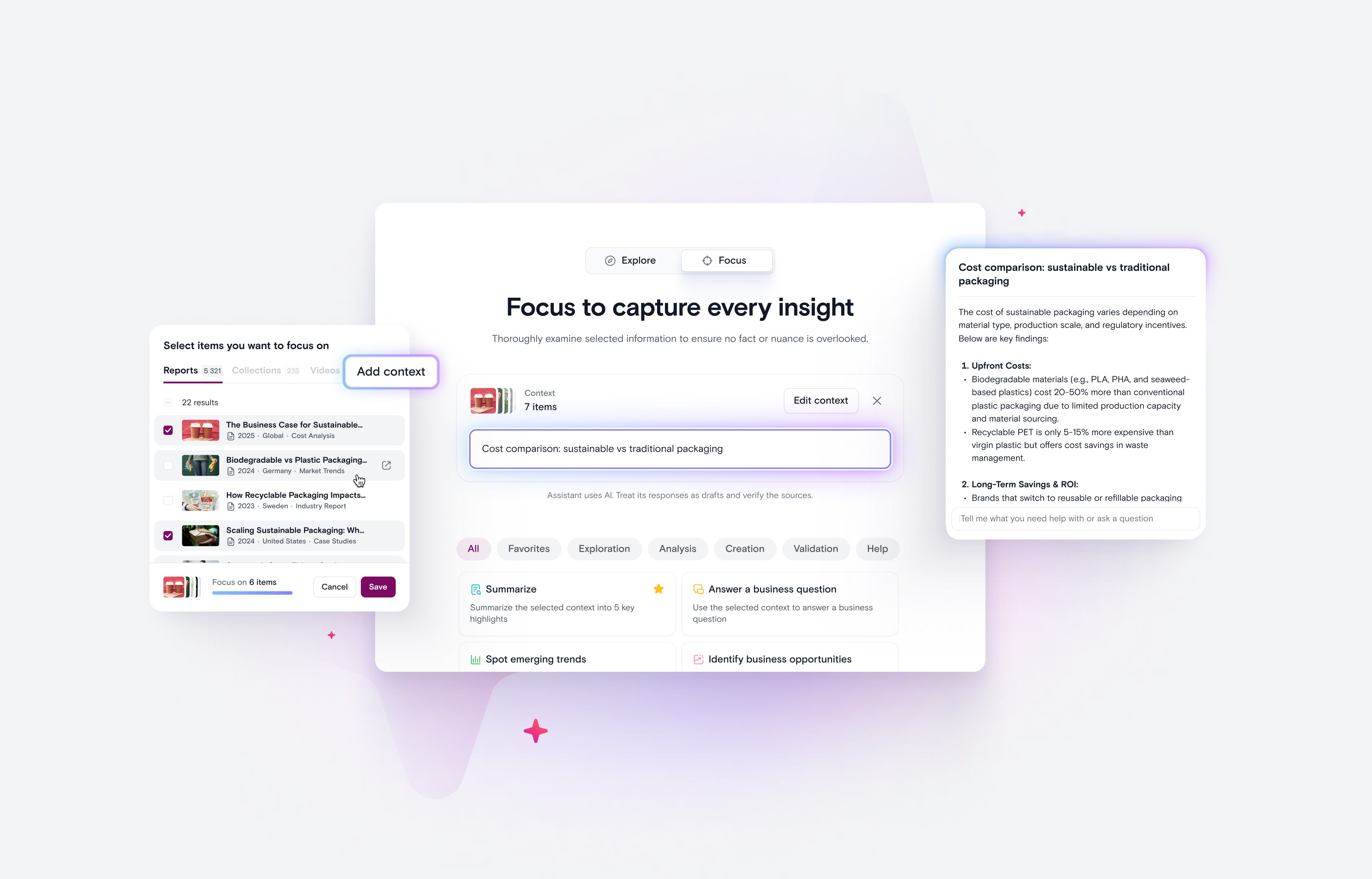Consumer Centricity Revisited

Last year, we delved into consumer centricity, looking into how it compares to customer centricity, why it’s important, common barriers to practicing it, and how to make practicing it easier.
This year, we’ve learned even more about how consumer centricity works in practice. We’ve talked to more industry leaders and learned a lot about how our clients use Stravito and other insights software to keep consumers at the heart of all their decisions.
That’s why we’re revisiting consumer centricity through an updated lens.
In this first article, we’ll briefly review relevant definitions, reasons it's important, and obstacles that get in the way. In the next installment, we’ll venture into how to make consumer centricity practical, covering concrete strategies for making it a reality.
Customer centricity or consumer centricity?
Previously, when we examined the potential differences between customer and consumer centricity, we took a perspective that was primarily relevant to CPG or FMCG companies.
Proposing 2 definitions, we defined consumer centricity as making decisions centered on the needs of people who have the potential to buy your product, whereas customers were those who have purchased your product.
But most importantly, we focused on the short-lived nature of customer status, positioning customer centricity as a focus on maintenance and consumer centricity as a focus on possibility for growth. We concluded that most companies need a bit of both.
Has anything changed?
While we don’t think the previous definitions are incorrect, we think that the need for a single common definition or differentiator between these two terms isn’t necessary.
What’s most important is that everyone in your organization is on the same page about who you want to focus on and ensures that those people are always the foundation for decision making.
Whether you refer to that philosophy as consumer, customer, or human centricity is up to you and your team. For the purposes of this article, we’ll use consumer centricity. But feel free to fill in the blank with whatever term makes the most sense for your company.
The continued importance of consumer centricity
While most consumer-facing businesses are in agreement that consumer centricity continues to be important, it never hurts to review some of the reasoning behind this idea. After all, there are dozens of initiatives your organization could choose to focus on.
So why prioritize consumer centricity?
The big picture: leveraging customer insights drives growth
According to McKinsey, organizations that leverage customer insights outperform peers by 85% in sales growth and by more than 25% in gross margin.
Watermark Consulting found similar results in their Customer Experience ROI study. Their analysis showed that Customer Experience leaders (companies with the highest customer experience rankings) saw cumulative total stock returns of 307.3%, while those with the lowest customer experience ratings saw returns of 90%– well below the S&P 500 Index average of 199.6%.
They explain that positive customer experiences boost business value by 1) increasing revenue and 2) controlling expenses. Because satisfied customers are easier to retain, less price-sensitive, more open-minded to new offers, and more likely to recommend your company to others.
What’s more is that happy customers also enhance the quality of growth.
All growth is not created equal; earned growth that comes from happy customers, either through repeat purchases or referrals, is more sustainable growth in the long term. That’s because, as we alluded to above, they cost less to acquire and maintain.
There’s a reason that two-thirds of the Fortune 100 use Net Promoter Score (NPS) as a customer success framework. By differentiating between enthusiastic customers and neutral ones, it provides a richer picture of customer satisfaction. On average, NPS leaders outgrow their competitors by more than 2x.
Loyalty is essential, but loyalty is in flux
As demonstrated above, satisfied and loyal customers are essential for sustainable growth. But over the last few months, consumers have been changing their behavior.
In fact, nearly 75% have made some change to their shopping behavior, and roughly 40% have been switching brands. These shifts are amplified for younger consumers and higher-income consumers. While value was a common reason to shift, older consumers were likely to report availability as a reason and younger consumers were likely to report purpose.
Navigating these changes requires innovations that better meet consumers’ needs. But without a thorough understanding of those needs, innovations are prone to failure.
In order to design innovations that drive growth, it’s essential for companies to stay close to consumers through a variety of insights tools that make it possible to leverage insights for better questions, answers, and solutions.
And while shifting loyalty represents a challenge, it also presents an excellent opportunity to try new ideas. However, to maximize this opportunity, it’s essential for stakeholders across the organization to have a deep understanding of which past innovations have succeeded and why (or why not) this is the case.
Consumer centricity doesn’t just benefit consumers
Focusing on creating happy customers can also boost employee engagement. When employees can see that their work has a purpose and are able to have meaningful connections with customers, they’re also more likely to feel satisfied and engaged.
Employee engagement can be defined as the degree to which employees:
- Feel committed to an organization
- Identify with an organization
- Feel satisfied with their job
- Feel energized at work
And when employees feel engaged, productivity is higher, absenteeism and turnover are reduced, and profitability increases. In fact, research has shown that companies with highly engaged employees outperform the competition by almost 150%.
But here’s the best part–it actually comes full circle; engaged employees are also associated with better customer experience. When employees are more engaged, they’re more committed to providing an excellent experience for customers.
So by working in a consumer-centric manner, you boost employee engagement, which enhances customer experience, which boosts employee engagement. Everyone wins (except for your competition).
So what’s the catch?
If the benefits are so clear, why doesn’t every company prioritize consumer-centric work?
The short answer is this: it’s a lot easier said than done.
Last year, we explored how information overload, cognitive bias, the wrong attitude, and the wrong culture can act as barriers to practicing consumer centricity.
All of these factors still present as obstacles, but since then we’ve observed a meta-barrier to practicing consumer centricity: a lack of support.
Without the right tools, processes, and partners, it’s easy to get caught up in these pitfalls. Because there are only so many hours in a day.
Just like consumer behavior, organizational behavior is complicated. There are a complex constellation of factors driving decisions, agendas, and budgets. Navigating these while also trying to unpack why consumers make the choices they do, or what choices they might make in the future is a tall order.
The solution, however, is surprisingly simple. It lies in remembering that we’re all human.
By choosing technology and processes that make room for meaningful work, practicing consumer centricity is absolutely doable. It’s just about knowing what to look for.
Related Content

To Maximize the Value of Your Research, Start with Knowledge Management
Sarah Wiggins Mar 27, 2025

Stravito Enhances GenAI Assistant to Accelerate Time-to-Insight
Charlotte Hilton Mar 20, 2025
.png?width=1200&name=2021%20Blog%20CTAs%20(7).png)
